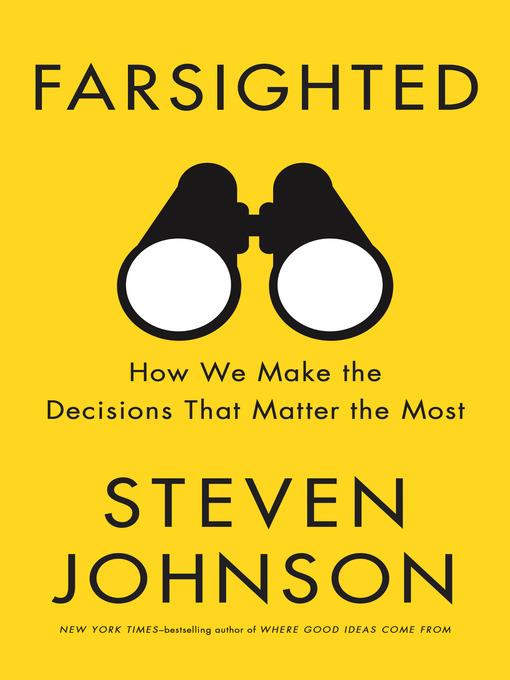
Farsighted
How We Make the Decisions That Matter the Most
کتاب های مرتبط
- اطلاعات
- نقد و بررسی
- دیدگاه کاربران
نقد و بررسی

May 21, 2018
Science writer Johnson (Wonderland: How Play Made the Modern World) looks at decision-making, on both the individual and collective level, persuasively arguing that it should be approached not intuitively, but deliberately, rationally, and even scientifically. A wise decision-maker, he believes, should engage in “full-spectrum mapping” of the alternatives at hand. As an example of a collective decision, he returns repeatedly to the painstaking process by which the Obama administration concluded that Osama bin Laden was holed up in a house in Abbottabad, Pakistan, and chose to storm that house. Johnson is particularly interesting on some of the momentous collective decisions facing humanity today, such as whether to make superintelligent machines that might ultimately outsmart their creators. Regarding individual decisions, one should build mental models of the repercussions, both for oneself and for others. Johnson also observes how great literature, such as George Eliot’s Middlemarch, helps readers broaden their emotional frame of reference and develop understanding and empathy for the sensibilities of others. Johnson is a succinct, colorful, and skillful writer, and this book is one of those rare works that is highly relevant to the daily functioning of just about everybody. Agent: Lydia Wills, Lydia Wills.

July 1, 2018
The bestselling science writer explores the elements of complex decision-making.Whom should I marry? Should I move? Should the United States occupy Iraq? Making tough, long-term, deliberative choices, writes Johnson (Wonderland: How Play Made the Modern World, 2016, etc.), is not taught in school, but it should be. In this bright, nuanced, story-filled book, he draws on the work of behavioral psychologists and neuroscientists to explain how to decide about things that really matter. "We need time to deliberate, to weigh the options, to listen to different points of view before we render a judgment," he writes. His recurrent, fascinating example is the nine months of "debate and deliberation" that led to the successful U.S. raid on Osama bin Laden's hiding place in Pakistan in 2011. Was bin Laden really in the compound? How to get in? (They examined 37 possible ways.) Should we capture or kill? Other examples include urban planning decisions: New York City buried its polluted Collect Pond in 1812 (rather than turn it into a public park), and within 30 years, the area became the notorious Five Points slum. In the early 2000s, the same city decided to revitalize (rather than demolish) abandoned West Side rail tracks, creating High Line Park. Johnson examines factors that make farsighted thinking challenging. Unlike simpler, pro-versus-con choices, complex decisions resemble the sort of quandaries that require environmental impact studies: "They involve multiple interacting variables; they demand thinking that covers a full spectrum of different experiences and scales; they force us to predict the future with varying levels of certainty." Often, they involve conflicting objectives or initially unclear options. The author details techniques for surmounting such obstacles--e.g., how to map variables, predict where potential paths may lead, and make a final decision. He stresses the importance of simulations and scenario-planning and makes an interesting if overlong case for how reading novels can improve decision-making.Close readers will undoubtedly learn to look carefully before leaping.
COPYRIGHT(2018) Kirkus Reviews, ALL RIGHTS RESERVED.

























دیدگاه کاربران